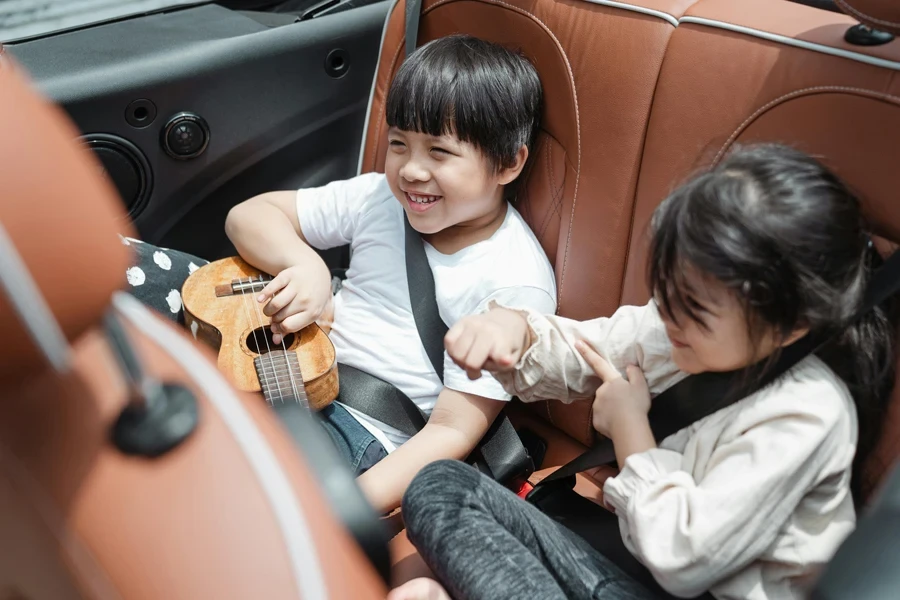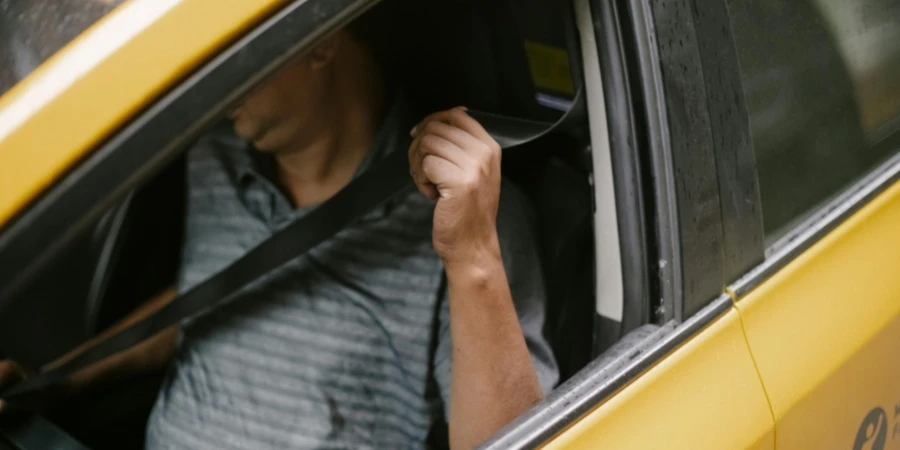Table of Contents
● Introduction
● Market overview
● Different types of car safety belts and their features
● Key factors to consider when selecting car safety belts
● Conclusion
Introduction
Car safety belts play a key role in keeping people safe in vehicles and preventing injuries by reducing the risk of harm to occupants of a car during collisions or sudden stops. Advancements have made it important for businesses and consumers to keep up to date with the trends and types of seat belts available. Understanding these developments is key to choosing the best safety solutions for different types of vehicles. Adherence to changing safety regulations is an obligation and a crucial measure in safeguarding lives while driving. In the automotive evolving sector, staying abreast of these advancements is essential to guaranteeing top-notch safety and security measures.

Market overview
The market is expected to grow from $15.37 billion in 2024 to $22.56 billion by 2032, with a compound annual growth rate of 4.9%. This growth is fueled by technological advancements, such as using seat belt systems like belts and pretensioners that improve safety and lower the chances of injuries in accidents. Additionally, global governments are implementing safety rules that boost the market as companies work hard to adhere to these changing standards. The increasing focus on road safety and vehicle seat belt usage requirements drive this trend.
Data from Fortune Business Insights in 2023 suggests that the Asia Pacific region is poised to lead the way with a recorded value of $5.64 billion market share. This growth trend is attributed to increased vehicle manufacturing activities and sales in nations like China, India, and Japan. Notably, China witnessed a spike in vehicle registrations, soaring from 24 million in 2003 to 319 million by 2022. North America and Europe also have market shares; North America is expected to contribute because of its stringent safety regulations and advanced automotive production industry practices. Regarding how products are sold to consumers, the market is divided into Original Equipment Manufacturers (OEM) and aftermarket sectors. The OEM sector holds a portion of the market because seat belts are provided specifically to each manufacturer to ensure compatibility and compliance with safety regulations. The aftermarket sector is valued lower. It still plays a role by offering customization options for older vehicles, resulting in a steady growth trend.

Different types of car safety belts and their features
2-point seat belts:
Lap belts or 2-point seat belts are the seat belt versions commonly seen in cars and planes that secure the wearer at the waist by crossing the lap area. They offer safety by restraining the body. Still, they may not be as effective in protecting against upper-body injuries in accidents due to their limited coverage. Compared to seat belt options today, which distribute crash forces more efficiently across the body for enhanced safety measures. Orion Safety Belts mentioned that these belts are slowly being replaced in car models because they offer protection compared to the more advanced seat belt systems commonly used today.
3-point seat belts:
The 3-point seat belt is now the safety feature found in cars today; it consists of a lap belt and a shoulder strap to hold the occupant securely across the pelvis and chest areas simultaneously. This design helps spread any impact forces during a collision across the body’s regions and significantly lowers the chances of severe injuries. According to HDFC ERGO findings, the 3-point seat belt is widely considered the type of seat belt in current use as it offers a good balance between comfort and protection. The fact that it’s being used in passengers and vehicles shows how well it improves the safety of people inside them.
4-point seat belts:
Racing and high-performance cars often use 4-point seat belts to offer support and safety, with two shoulder straps and a lap belt included in their design. They aim to keep the driver in position during fast turns and accidents to avoid unnecessary movement that may cause harm. As per Orion Safety Belts insights, 4-point belts are gaining traction in sports cars due to their superior ability to secure occupants compared to traditional 3-point seat belts. In challenging settings where vehicles must perform at their best, their improved assistance is especially crucial for ensuring safety measures are in place.

5-point seat belts:
Seat belts, with five attachment points, are commonly seen in motorsports and child safety seats for protection, as they anchor the individual at five points. Two over the shoulders and hips each and one between the legs. Spreading impact forces across a wider body area reduces the chance of severe harm. Per HDFC ERGO’s explanation, the purpose of these belts is to stop individuals from getting thrown out of their seats in collisions. This makes them perfect for scenarios where utmost restraint is crucial, like racing or for little ones in car seats.
Technologically advanced belts:
Modern seat belts that are technologically advanced have added safety features, like built-in airbags and pretensions, to protect occupants in a collision or accident situation. The integrated airbags in these seat belts deploy to protect the head and neck of the occupant during a crash. A report by Fortune Business Insights highlights the increasing popularity of these seat belts among consumers who prioritize safety in luxury and contemporary vehicles. Automated pretensioners adjust the seatbelt in a crash to remove any slack and securely hold the occupant in position; meanwhile, load limiters offer some belt flexibility to avoid pressure on the chest area. These advancements showcase the forefront of safety measures as carmakers strive to meet safety standards and cater to consumers’ growing need for improved protection.
Key factors to consider when selecting car safety belts
Vehicle type and usage:
The selection of seat belts is greatly impacted by the type of vehicle being considered. Typical of this are passenger cars that usually come equipped with 3-point seat belts known for providing a blend of comfort and safety ideal for driving routines. On the other hand, some commercial vehicles used for transporting goods or individuals over extended distances may necessitate seat belts incorporating features like pretensioners and load limiters to guarantee the safety of both drivers and passengers on long journeys. PerOrion Safety Belts information, performance cars, and similar high-speed automobiles typically utilize 4-point or 5-point harnesses to offer restraint and reduce motion in cases of sudden turns or accidents. When choosing seatbelts for a vehicle, it’s crucial to consider the driving patterns linked with the car, like how long journeys are made or the chances of driving at high speeds, since these aspects may determine the requirement for added safety measures.

Safety standards and compliance:
Choosing seat belts that meet safety standards is extremely important to guarantee the safety of passengers inside a vehicle. Ensuring that seat belts comply with regulations like those established by the National Highway Traffic Safety Administration (in the United States) or the European New Car Assessment Programme (in Europe) is crucial. Based on information from Fortune Business Insights sources, restraint systems made by Original Equipment Manufacturers (OEMs) designed for car models undergo testing to ensure they meet these strict guidelines and provide top-notch safety features. When it comes to aftermarket seat belts and their customization options, it’s crucial to ensure they meet safety standards before installing them in your vehicle. Deciding between OEM and aftermarket belts should be based on complying with regulations and considering the safety needs of your car specifically.
Technological features:
Enhanced safety features in seat belts, like pre-tensioners and load limiters, improve protection by boosting the belt’s effectiveness in a crash scenario. Pretensioners automatically cinch the belt to eliminate slack and secure the occupant firmly. Load limiters provide some flexibility in the belt to minimize pressure on the occupant’s chest in case of a collision. As per the Fortune Business Insights report, these characteristics are commonly seen in cars in upscale models prioritizing safety measures. When opting for seat belts, it is crucial to pick compactness, with your vehicle’s safety cars set up to guarantee all parts function harmoniously to offer protection. For instance, a car with state-of-the-art airbag technology could gain from seat belts that incorporate airbag functions, providing safety in collisions.
Durability and maintenance:
The durability and upkeep of seat belts ensure safety measures are in place for vehicle occupants. Inspecting seat belts for any wear and tear, such as fraying or cuts, that may compromise their functionality is crucial. Orion Safety Belts recommends replacing any seat belts exhibiting signs of wear and tear to maintain optimal safety standards in vehicles where the seat belts have been used for an extended period. Keeping the retractors and buckles in good condition is important to ensure the seatbelt can be fastened and unfastened properly when required. Thoroughly checking and replacing seat belts when needed is essential for following safety rules and keeping those inside the vehicle safe.

Conclusion
Picking the right seat belt is essential to guarantee safety and adherence. It directly affects the level of protection provided to passengers in a car crash situation. The continuous progress in safety technology emphasizes the need to stay updated on the developments and improvements in seat belt designs to make informed choices that promote safety. By opting for belts that adhere to safety regulations and include advanced functionalities, you can notably decrease the likelihood of injury and guarantee that your vehicle is fitted with top-of-the-line safety features.




